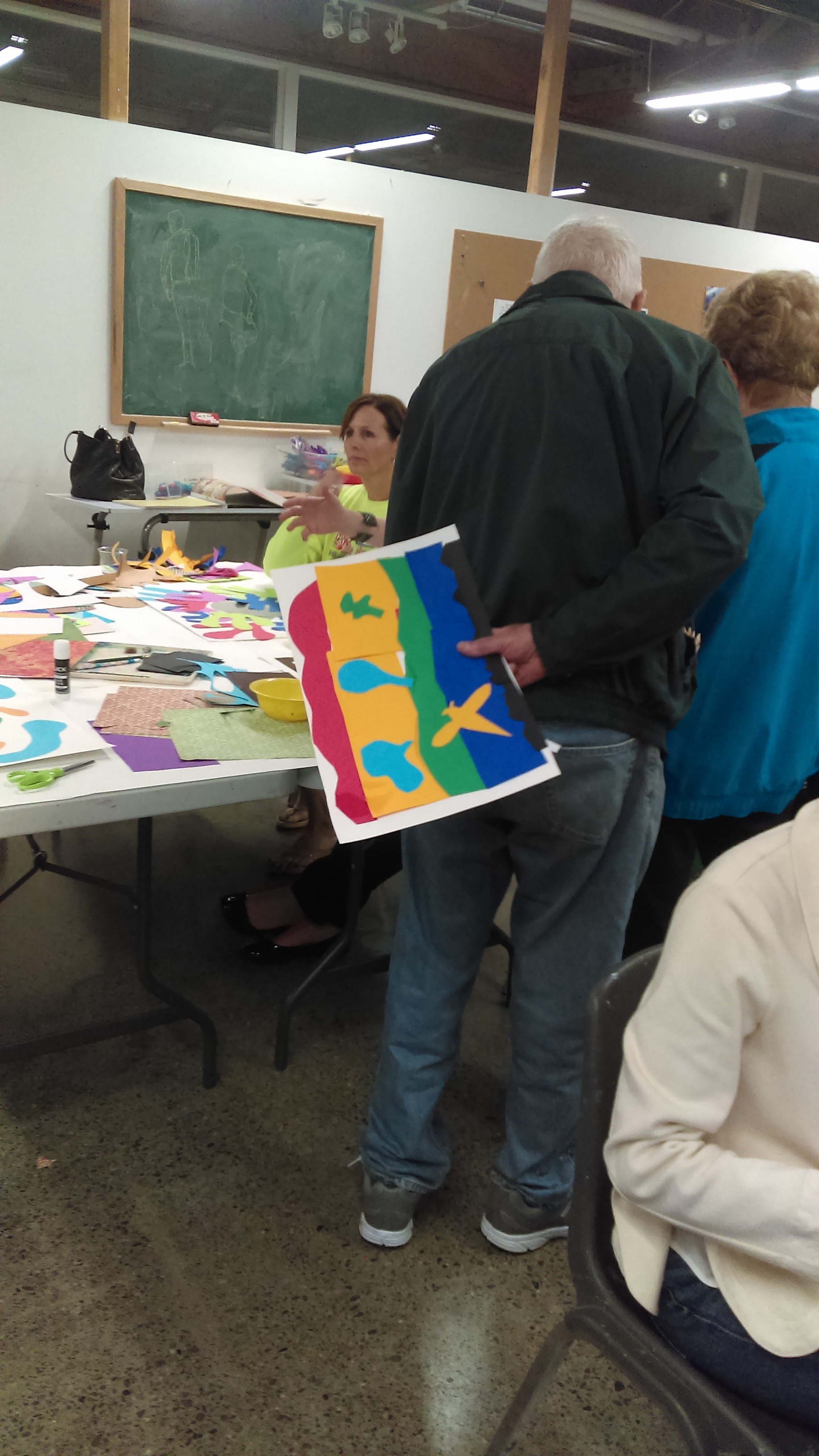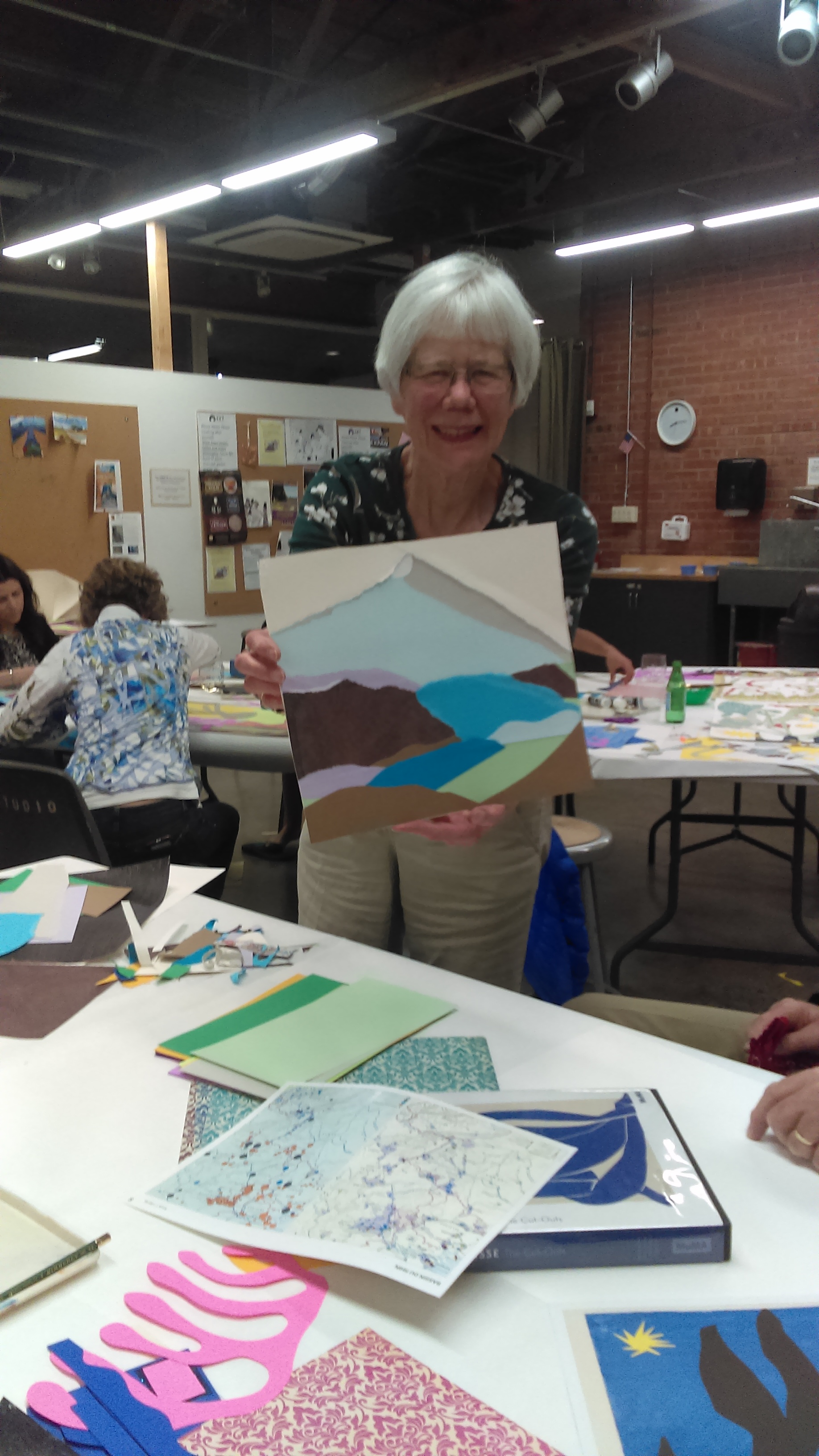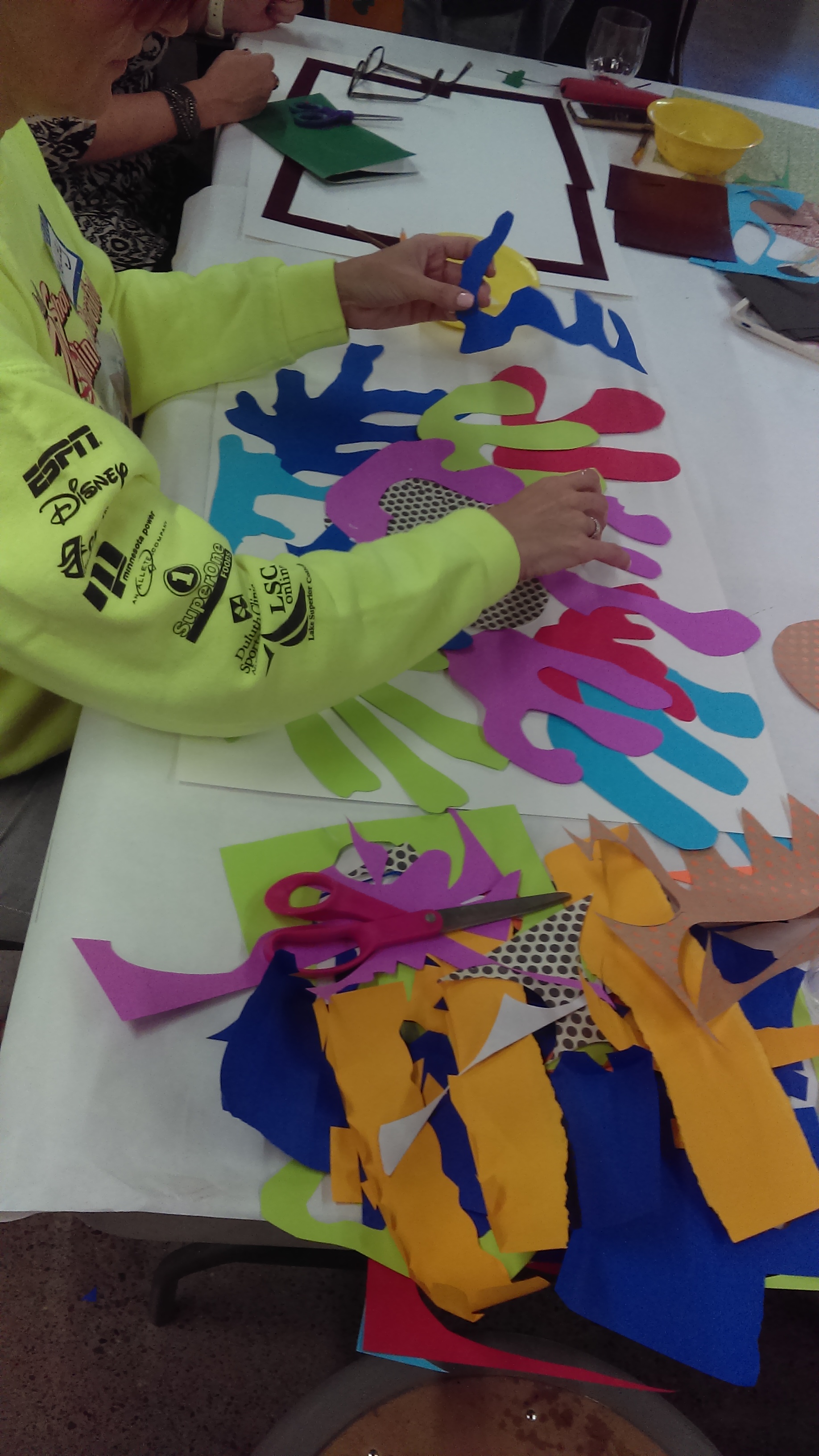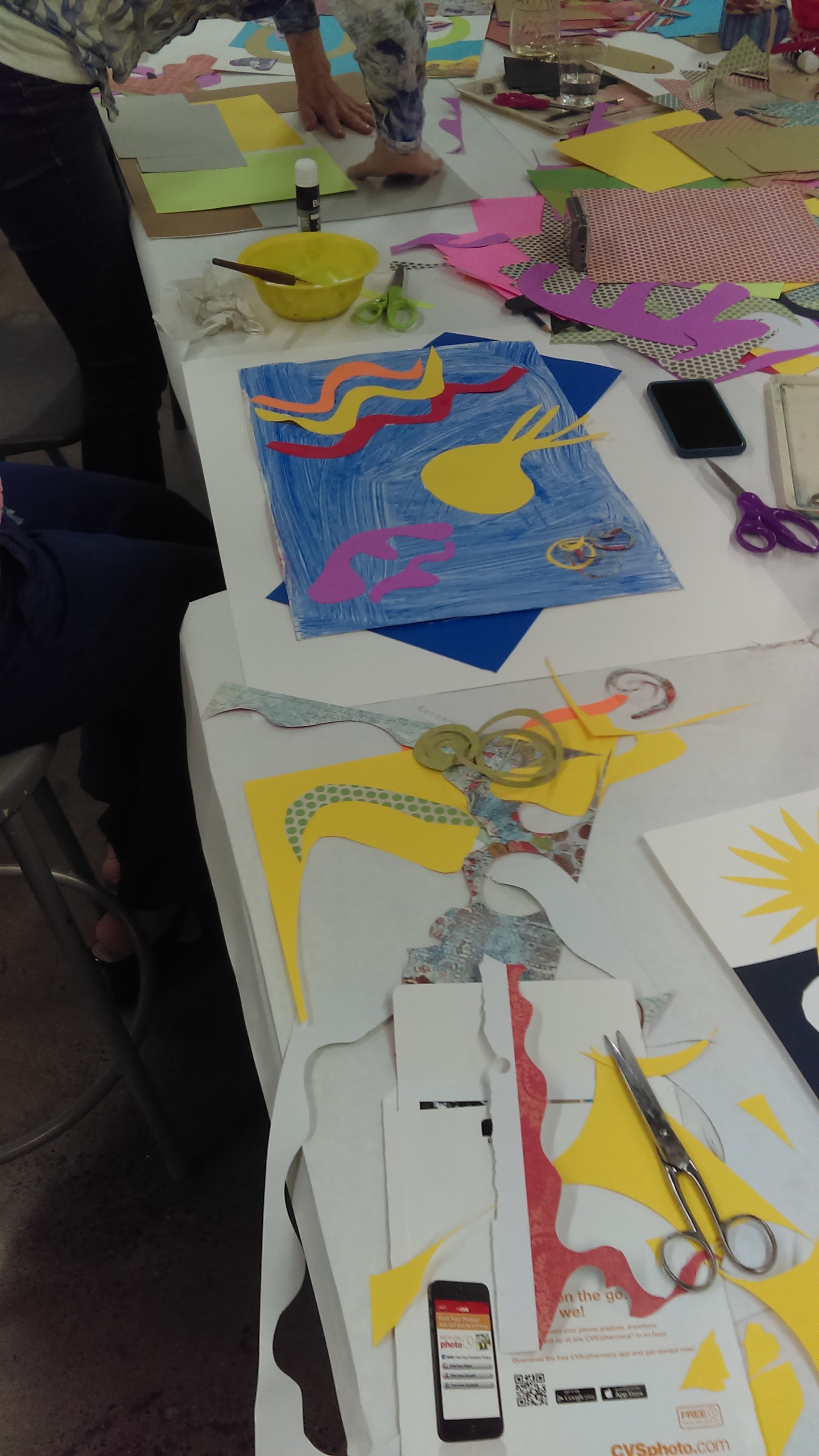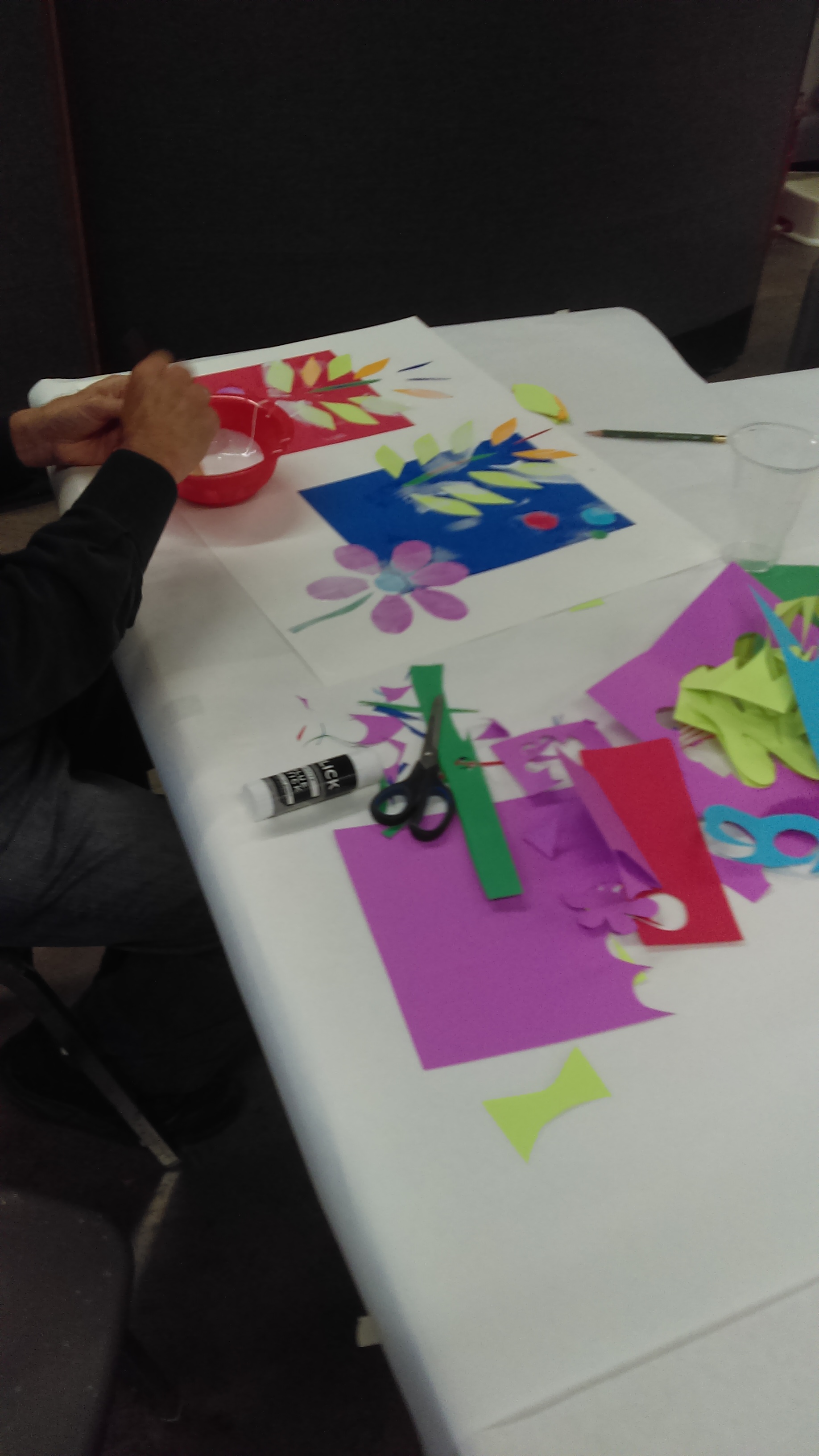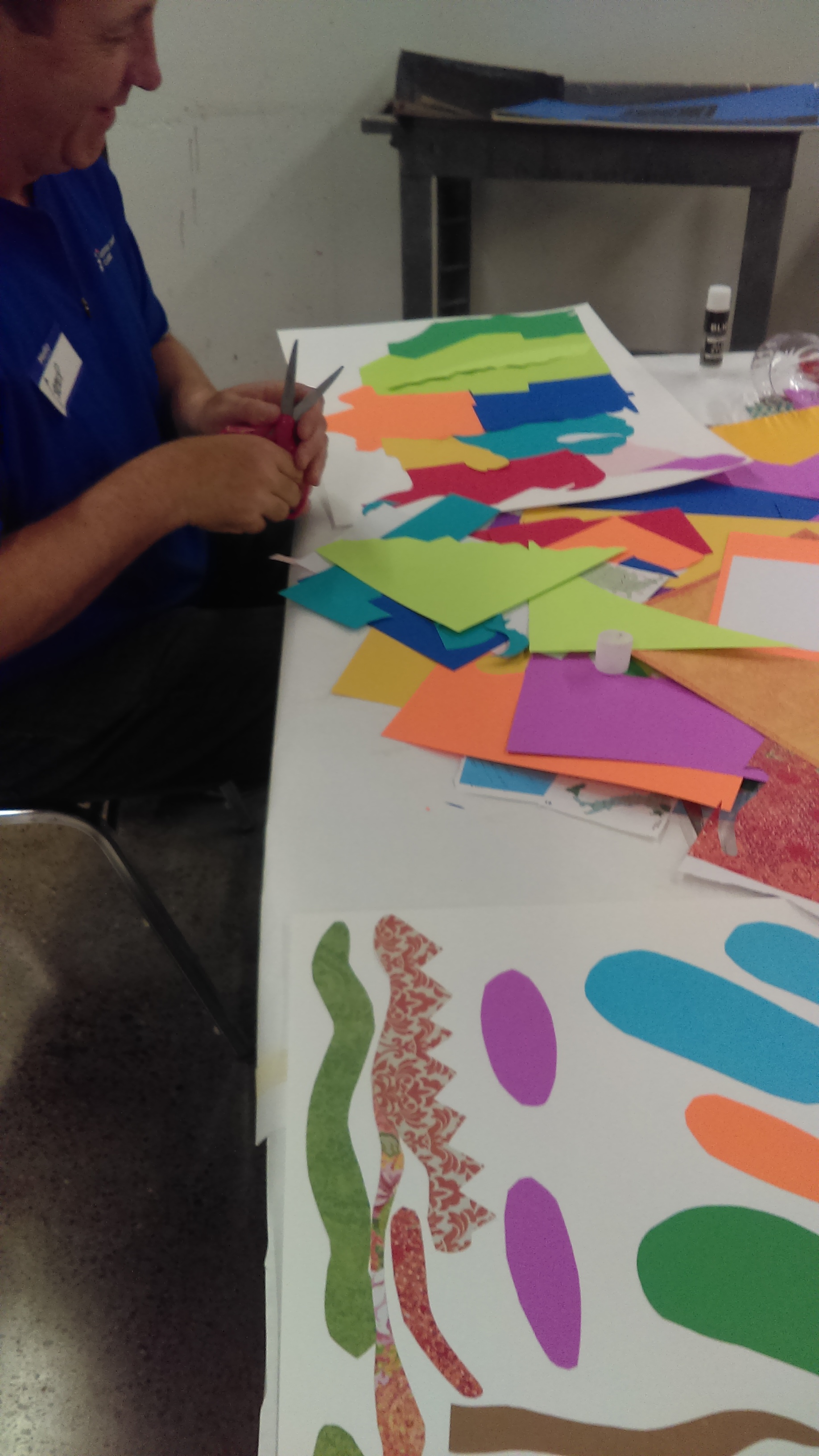Collage and Mixed Media Experiments
Syllabus and Materials Ideas
Welcome to my collage and mixed media class, at the Palo Alto Art Center. Please find a suggested materials list and draft curriculum below. This class is a little unusual in its structure. Please bring whatever supplies you love into class and we will make art. My class will follow a similar structure as my other classes: a short demonstration, material or concept introduction followed by lots of time to create. I have a few suggestions for preferred surfaces and glue for collage, but other then those specific ideas, this class can be done with found materials and paper obtained from the Friends of the Library sale. You may want to collect ideas or artists that you love, or think of an artistic idea you would like to execute, or even begin with a place in your house you would like to hang a nice piece of artwork, and bring that idea into class. I will help you accomplish it.
Draft Syllabus
The first three weeks are probably set, but after that, I would like the students to help determine what the class explores. Some of these projects require a small cash input from the students-- a ten dollar model fee, or a few dollars for solar paper for example, or bring your own.
Week 1: Jump right in, Matisse-inspired collages-- I will bring paper, please bring substrate, brush or roller, and glue.
Week 2: Making our own collage paper and why. Eric Carle and the decorative papers out there. Why buy when you can make something cool? Bring paints of some kind, or oil pastels, or watercolor or colored pencils and papers to mark up. It would be great if we can make a bunch of papers and share around so everyone can build their paper library.
Week Three: Photo-montage: found images put together in interesting ways. Start collecting images you would like to use... magazines, old photos, stamps, cut apart books, maps, music poems, handwritten text, etc. I will bring magazines.
Week Four: Gelli prints— This week, we usually make sets of greeting cards using collage and or mixed media techniques. Bring a gelli plate if you have one and bodied paint, such as monotype or acrylic paints. Here is a buy link.
Week Five: Abstraction and Visual Language. Developing a visual language, talking about how shapes, symbols and colors affect perception of your artwork.
Week Six: Mixed media collages-- bringing paint, ink, pencils, oil pastels, pens and other marks into the collages. Photo Transfer onto plywood with an inkjet printer.
Week Seven: Figurative Collage: working from sketches, photos or from a model. doing figurative collages with torn or cut paper.
Week Eight: Finishes for collage: wax finish, varnish, spray varnish, self-leveling gel, resin pour.
Week Nine: Altered and rebuilt books.
Week 10: Assemblage boxes. — 3 D collages.
Other Ideas:
Sculpture with paper, paper clay projects,
Sunprinting, color swatch artwork. swatch collages,
collage trinkets, such as trivets, or glassware— i.e. decoupage.
Marbling. youtube video.
Collage Samples

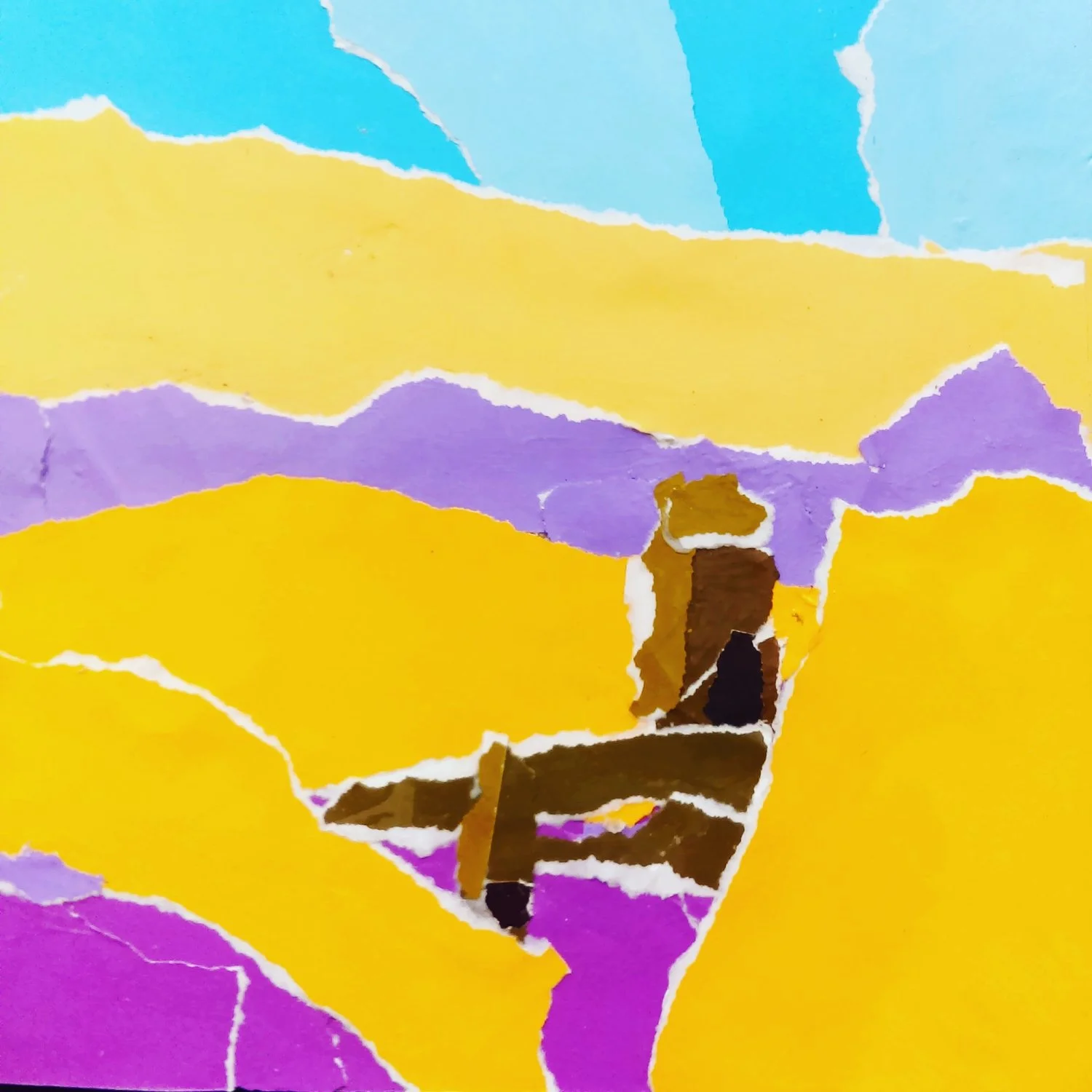

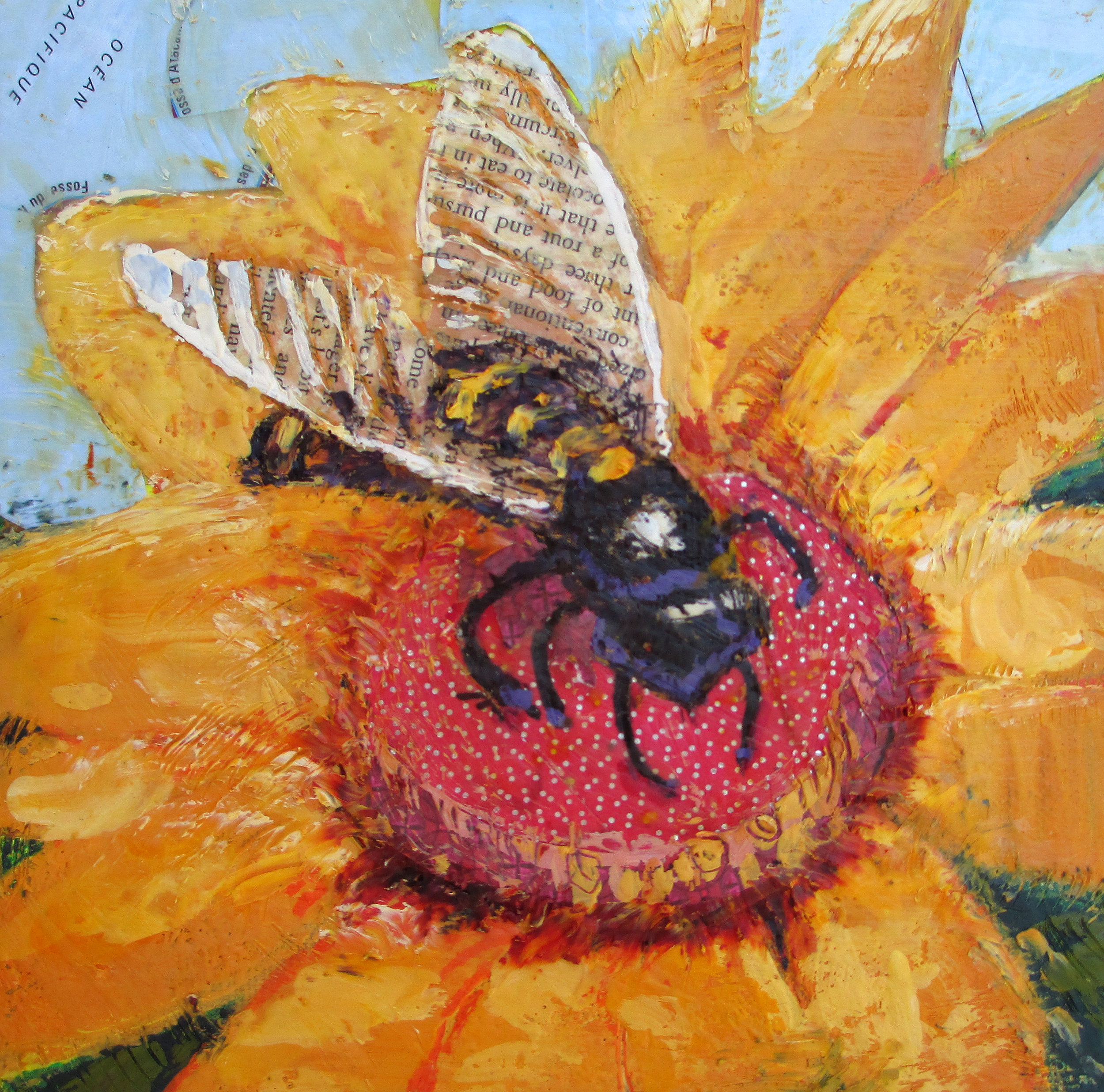
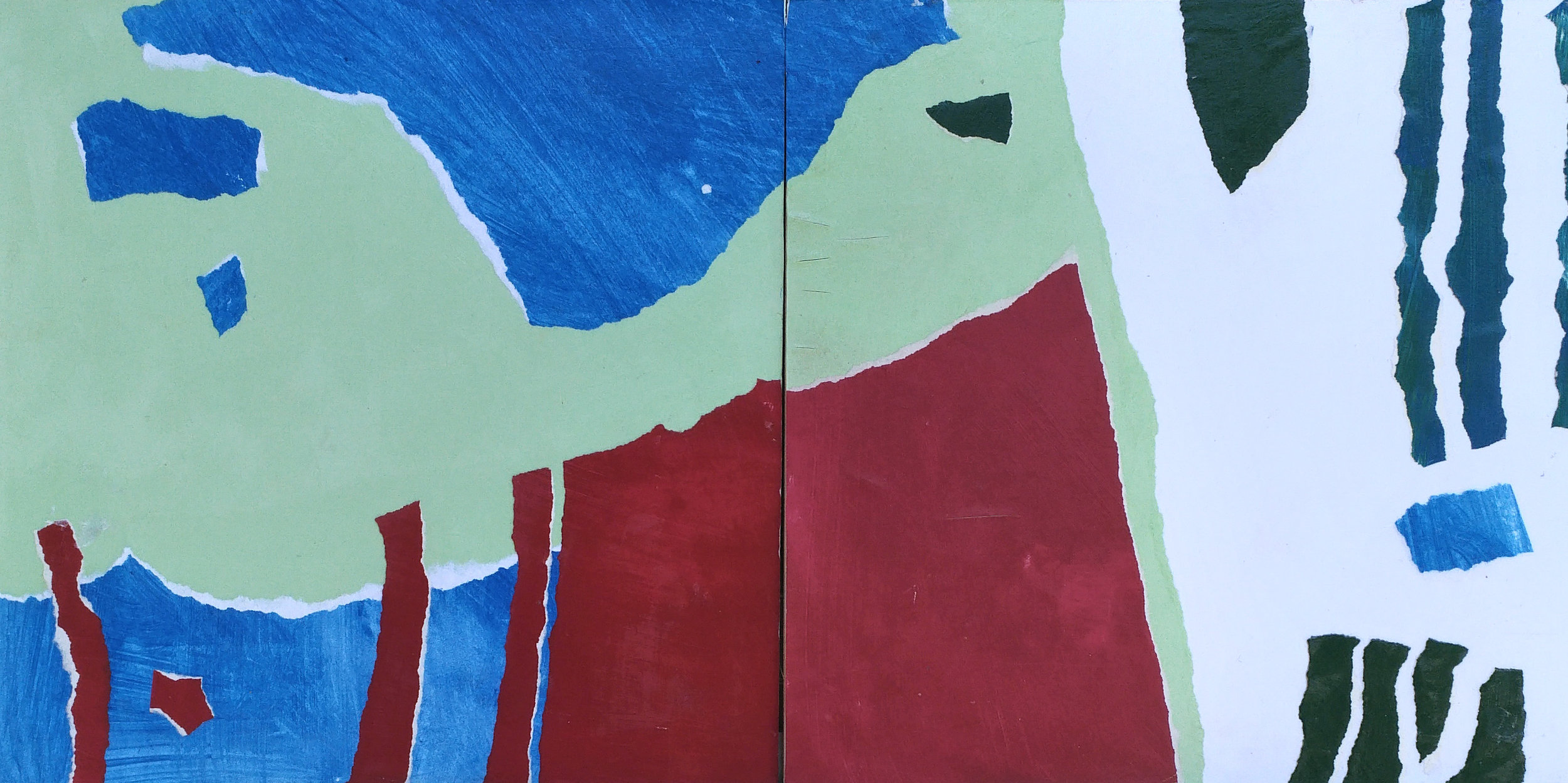

Places to Buy Collage Supplies
Accent Arts, on Jacaranda Lane behind Joanie’s Cafe on California Avenue. Open from 11-4 pm, Tuesday through Saturday.
Bruce Bauer Lumber yard is a good source of MDF Panels and everything else you need.
Kelly Paper in Palo Alto. Corner of Middlefield and San Antonio.
Michael’s
Your recycling bin.
Your bookshelves.
The Friends of the Library Palo Alto Book Sale, second weekend of each month at the Cubberley Community Center.
SCRAP in San Francisco (fabric mainly.)
Any of the library sale book rooms or cases are great places to pick up source material for a dollar or two.
Other Friends of the Library sales—Sunnyvale, Menlo Park, Los Altos.
EBay has sales of ephemeria— collage friends of mine buy old papers, photos and letter there to make new art with.
Students at Work
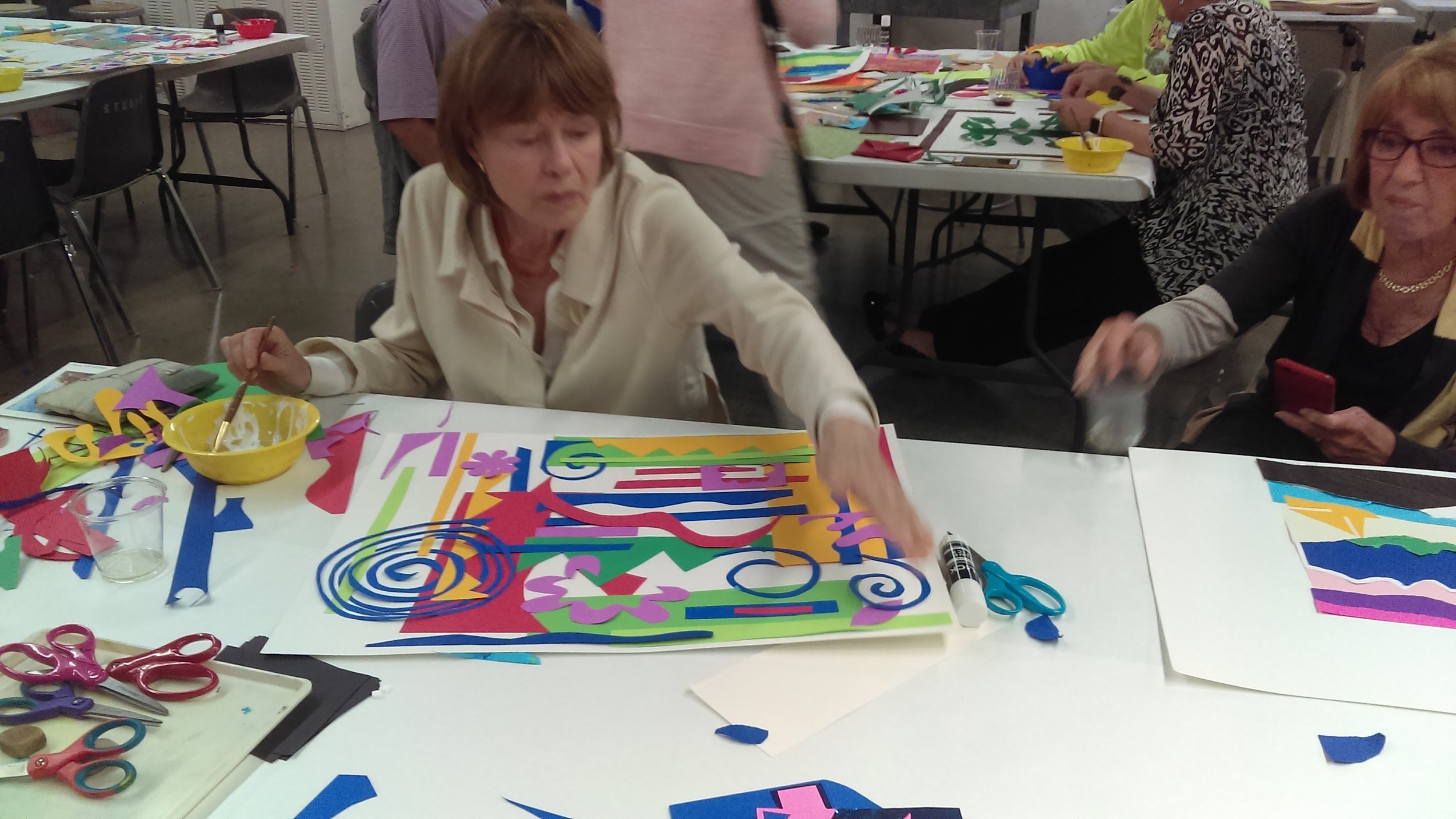


Favorite Collage Books
Henri Matisse: The Cut-Outs Hardcover –
by Samantha Friedman et al.
Picture This: How Pictures Work
by Molly Bang
Materials
Here are some supplies you may need, depending on what you want to do: Cradled board, mdf panels (which you can by from Bruce Bauer, or from me), exacto knife, razor blade, heat gun (I will bring some for class, but you may want one for home) scissors, cheap brushes, and either modge-podge or Elmer’s glue or acrylic gloss carnish. Paper makes a fine substrate as well.
Basic required supplies:
Old credit card
Glue of some kind— more on this below.
Breyer
X-acto knife — some people like to have their own self-healing cuttng mat, but there are several for general use in the studio.
Scissors
Bristle Brushes
Substrates— more on this below
Glue bowl of some kind.
Paper towels— the studio ones are terrible.
Paper collection or your own.
Glue Stick
Whatever mixed media supplies you have— watercolor, acrylic, gelli plates, oil pastels, colored pencils, etc. Don’t buy, just bring what you happen to have.
Possible Substrates:
Cradled Art Boards: stout, won't bend, finished, ready to hang. Comes in large and small sizes. Buy at the art store. Canvas panels and stretched canvas don't work very well. The surface for collage needs to be fairly rigid.
Quarter-inch MDF-- a substance a bit like Masonite. I buy it in sheets at Bruce Bauer and have them cut it to size for me. Suitable for small works, such as 10 x 10 or 16 x 16. Larger sizes will bend and warp as the glue dries. I'll bring some to class, and you can purchase them at cost, for a dollar or two a panel. They are great for working in series as well.
Heavy-weight paper, such as printer's paper, watercolor paper, or similar; this works well with lightweight papers attached to it. If you want to add heavy or three-dimensional objects or papers to your collages, I suggest a hard surface instead.
Nice to Have Supplies
An apron, and gloves, if you prefer to keep glue off your hands.
Store bought, pretty handmade papers
Self-healing cutting mat, rotary cutter
Different varnishes and glues— buy these as you get interested in them, or as you need them.
Gloss/matte acrylic medium for lighter weight papers
Outdoor varnish for object meant to live outside, such as polyurethane.
Resin pouring (you tube video) as a final finish. Used to be very trendy, but rapidly falling out of fashion.
Self-leveling Gel from Golden Acrylics. For those who do not like brush marks or want a smooth final finish to their collages.
Washi papers or Origami papers
Coloring Books, to find line elements to add to images.
Magazines
Inspiration Ideas
Collage inspirations from my Instagram wanderings:
Danielle Krysa (also writes cool books)
Some other inspirations:
My instructable on doing collage with kids-- lots of good ideas on where to find collage materials.
Top 10 collage artists according to Widewalls.com.
The ever-lovely blog This is Colossal with search set to "collage".


